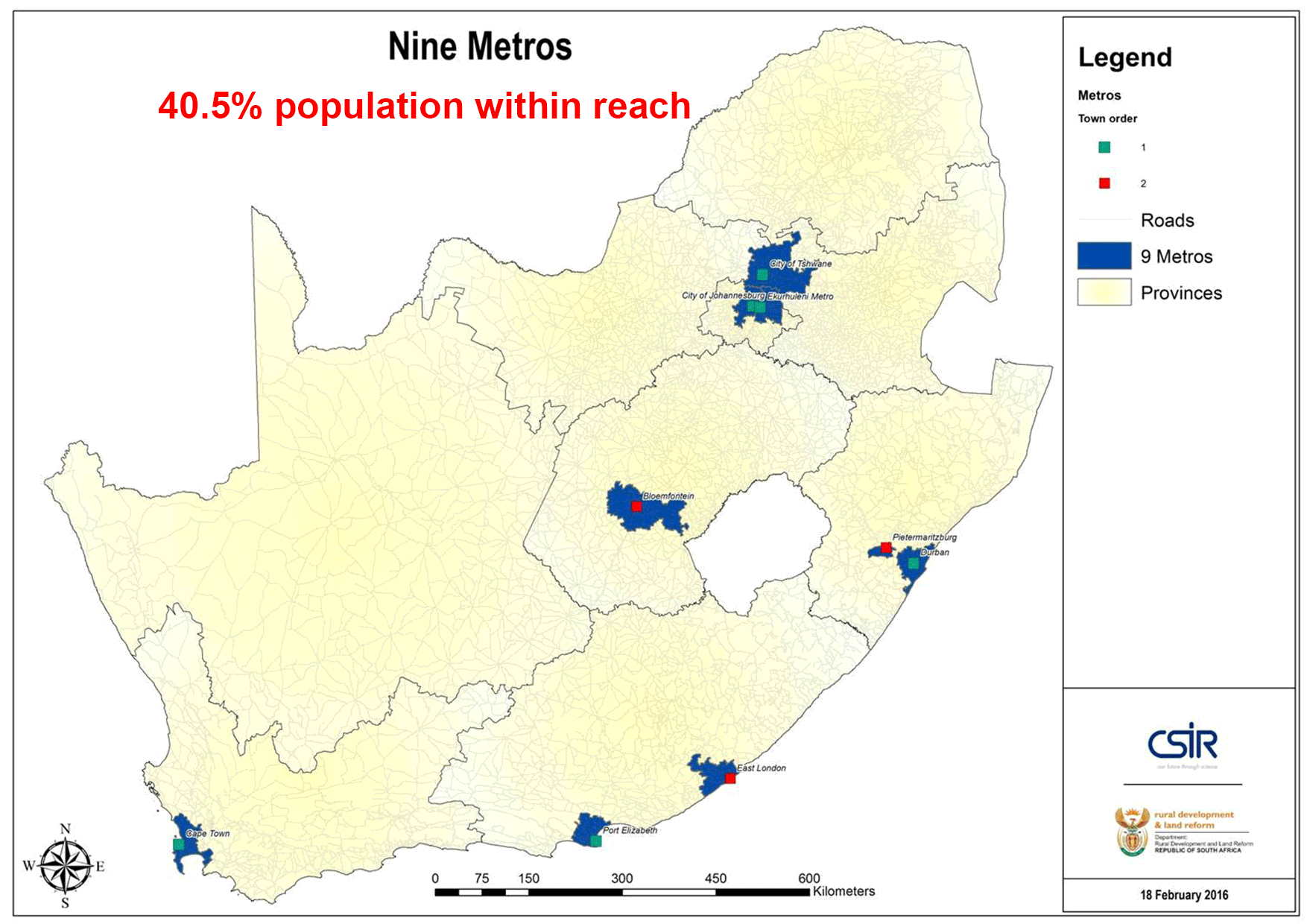The effective delivery of social services in rural South Africa remains a major challenge especially outside of metropolitan areas and on the urban periphery. On the supply side, challenges include the poor planning and location of facilities, uncoordinated government investment and the need to ensure sustainable and effective service delivery within a resource scarce context. On the demand side the challenges are to provide facilities in a manner that is spatially just and equitable within the context of fast growing town and settlement population, with changing demographic profiles, extensive sparsely populated areas living in different settlement configurations and patterns as well as varied levels of mobility and access to social facilities.One of the key challenges identified was the need for greater differentiation of service types to clearly link facility levels to different contexts to enable improved location and distribution of facilities to achieve greater service efficiency and viability in areas with limited demand or with poor accessibility. One means of achieving this is through greater spatial profiling that enables facility investment to be more closely aligned to service need in terms of demographic distribution with respect to population distribution and density. Goal is to enable effective, just and more sustainable service delivery of services in all areas especially those with limited demand and accessibility. Read more >>
The prioritised town locations and the respective areas within service reach of the priority towns are shown in the accompanying animated graphic. The graphic indicates the relationship between a number of core service points versus the percentage of population within reach for towns of different levels of priority assuming only one service point per service area.
Prioritization analysis outputs

Spatial targeting and service reach for middle to higher order services (Source: Green, et al. 2016).



